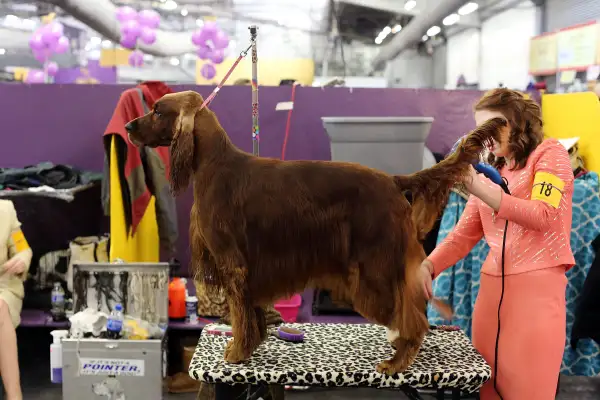It's Not Just Westminster Dog Owners Who Spend Crazy Amounts of Money on Their Pups

More than 3,000 pampered pooches will take over Manhattan (and your television) Tuesday night for the final day of judging at Westminster Kennel Club's 139th annual all-breed dog show.
While dogs from 192 different breeds and varieties will compete for Best in Show, to be a serious contender a dog needs to have first run a successful campaign—or "an exhausting, time-consuming, and very expensive gantlet of dog show wins, buttressed by ads in publications like Dog News and The Canine Chronicle," the New York Times reported in 2010.
Yes, ads: Some competitors said they spent as much as $100,000 annually to showcase a dog's recent victories—and cute face—in the hopes of swaying future judges. Add in the cost for a professional handler, plane tickets, and other expenses for traveling to roughly 150 shows a year, and campaigning for a top dog can easily break into the hundreds of thousands.
Of course, most dogs, even those with $300,000 budgets, rarely win the title after only a single year of competing. Because it takes time to build a dog's reputation, these campaigns typically last a few years. One handler whose pup won best in show at Westminster in 2006 told the Times that the three-year runup to the victory cost around $700,000.
That kind of travel purse has top Manhattan hotels rolling out the plastic turf, padded armchairs, dog treadmills, and canine treats to attract Westminsterites, reports the Wall Street Journal.
Think that's over the top? Well, while most of us don't shell out a small fortune to raise award-winning pets, we still lavish quite a bit on Fido all the same.
In 2013, Americans spent a record $55.7 billion, or about the equivalent of Croatia's gross domestic product, on puppy chow, cat litter, grooming, toys, vet visits, and all other matter of indulgences, according to the American Pet Products Association. The estimates for 2014 reach even higher: $58.51 billion, keeping pace with the industry's steady 4% to 6% growth a year since record-keeping started in 1996.
Two decades ago, Americans' total spending on pets was $31.1 billion, adjusted for inflation. Last year, Americans spent an estimated $22.6 billion just on pet food.
Those figures break down to each U.S. household spending a little more than $500 a year on their pets. That's more than we spend annually on alcohol ($456) or mens' clothing ($404) according to the Bureau of Labor Statistics.
So clearly, owners of dog show stars aren't the only ones willing to make sacrifices for their pets.
